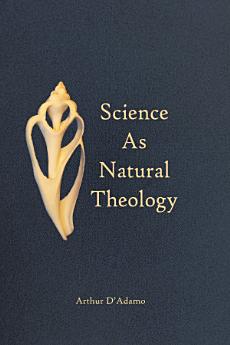Science as Natural Theology
Arthur D'Adamo
Jul 2016 · Adamford.com
4.8star
5 reviewsreport
Ebook
152
Pages
family_home
Eligible
info
reportRatings and reviews aren’t verified Learn More
About this ebook
Imagine a list of all the gods and goddesses worshipped over the centuries. The list would include the following: Anuket, Astarte, Atlas, Dyeus, Freyja, Gaia, Isis, Ixcacao, Izanagi, Kali, Kichigonai, Lakshmi, Mat Zemlya, Olorun, Pangu, Quetzalcoatl, Ra, Tengri, Thor, Toci, Venus, Viracocha, Xi Wangmu, and Zeus.
And more. Thousands more. Unless we believe
all those gods and goddesses genuinely exist,
we must regard at least some of them as fictions.
Such a prolific invention of gods and goddesses
might cause us to wonder if we should regard
the various gods and goddesses worshipped today
as fictions, too. But it might also lead us to wonder
if an obscure intuition of some reality
motivates those inventions.
We want to construct an accurate picture of that reality. So we start with what we know, with solid fact; we begin with the knowledge we’ve collected,
refined and repeatedly verified over the centuries.
In other words, we attempt to dispassionately
infer the theological consequences, if any, of science.
And more. Thousands more. Unless we believe
all those gods and goddesses genuinely exist,
we must regard at least some of them as fictions.
Such a prolific invention of gods and goddesses
might cause us to wonder if we should regard
the various gods and goddesses worshipped today
as fictions, too. But it might also lead us to wonder
if an obscure intuition of some reality
motivates those inventions.
We want to construct an accurate picture of that reality. So we start with what we know, with solid fact; we begin with the knowledge we’ve collected,
refined and repeatedly verified over the centuries.
In other words, we attempt to dispassionately
infer the theological consequences, if any, of science.
Ratings and reviews
4.8
5 reviews
Mabel Stephen
- Flag inappropriate
February 3, 2021
it's interesting and I like it
1 person found this review helpful
Rate this ebook
Tell us what you think.
Reading information
Smartphones and tablets
Install the Google Play Books app for Android and iPad/iPhone. It syncs automatically with your account and allows you to read online or offline wherever you are.
Laptops and computers
You can listen to audiobooks purchased on Google Play using your computer's web browser.
eReaders and other devices
To read on e-ink devices like Kobo eReaders, you'll need to download a file and transfer it to your device. Follow the detailed Help Center instructions to transfer the files to supported eReaders.




